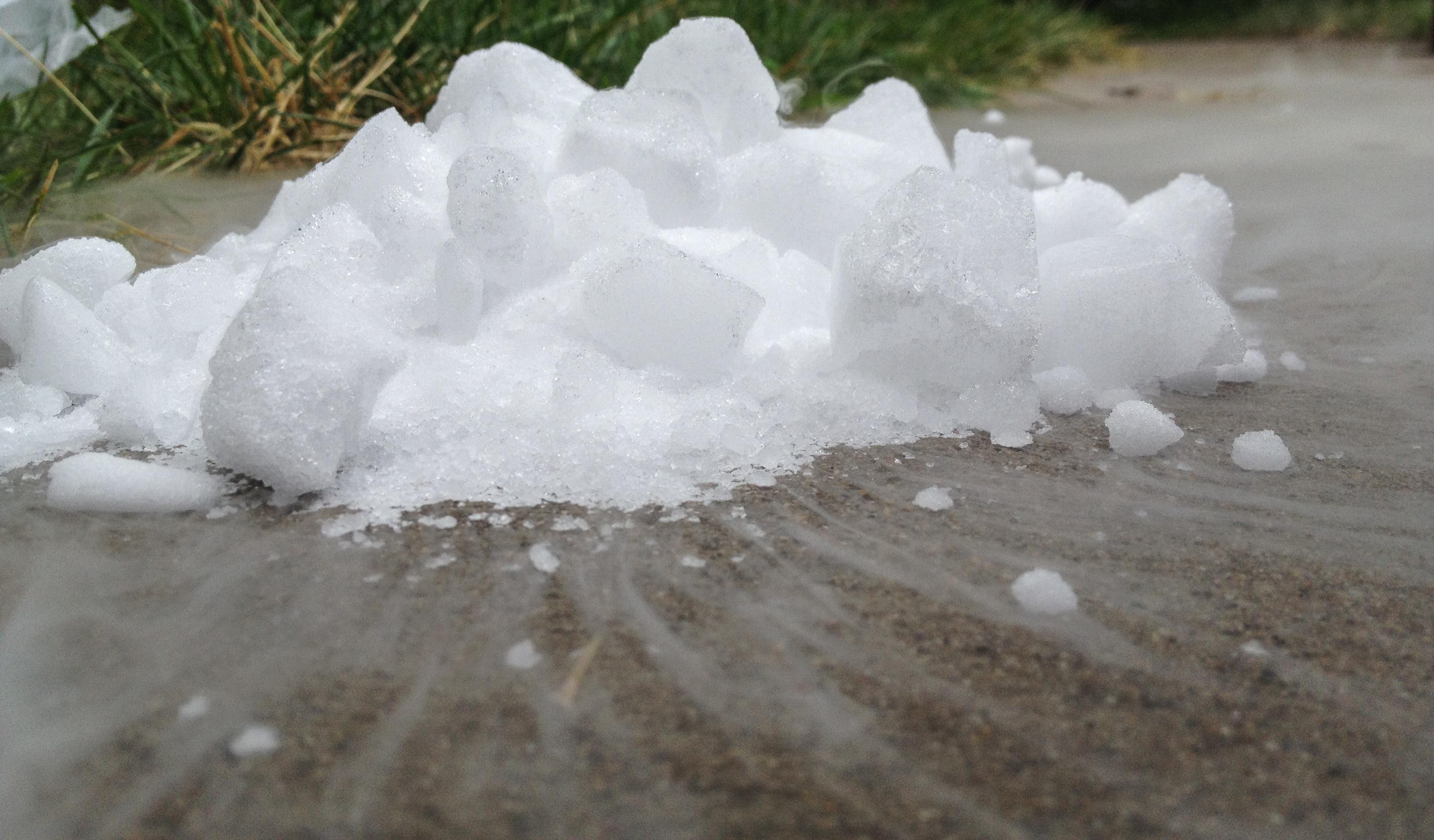
Dry ice is not only a captivating substance popularly seen in fog-filled containers at Halloween parties; it also offers a range of practical uses in various fields. From preserving perishables during transportation to creating stunning special effects and even removing unwanted residues, the versatility of dry ice makes it an invaluable tool in several industries. In this article, we will delve into the myriad applications of dry ice and provide you with comprehensive guidance on how to safely and effectively utilize this unique frozen gas. Whether you are a scientist, a caterer, or a creative enthusiast, join us as we unlock the secrets of harnessing the power of dry ice for an array of purposes.
What Is Dry Ice and its Properties?
Dry Ice: What It Is and Its Properties
Dry ice is the solid form of carbon dioxide gas. It is commonly used for a variety of applications due to its unique properties. Unlike regular ice, dry ice does not melt into a liquid when heated, it undergoes sublimation, meaning it transitions directly from a solid to a gas. This process occurs at a temperature of -78.5 degrees Celsius (-109.3 degrees Fahrenheit), making dry ice extremely cold.
One of the most notable properties of dry ice is its ability to create a dense, white fog when placed in water. This effect is commonly used in theatrical productions, events, and Halloween parties to create an eerie atmosphere. By combining dry ice with hot water, the dry ice rapidly sublimates, creating the fog-like effect that adds an element of mystery and excitement to any occasion.
Another useful property of dry ice is its ability to keep items cold. Due to its extremely low temperature, dry ice is commonly used to transport and store perishable goods, such as frozen foods or medical supplies. When packed with the items, the sublimation of dry ice keeps the temperature inside the container consistently low, ensuring the products remain frozen and fresh.
In addition to its cooling properties, dry ice is also commonly used for cleaning. This process, known as dry ice blasting, involves propelling pellets of dry ice at high speeds. The impact of the dry ice pellets removes contaminants or unwanted substances from the surface being cleaned. This method is particularly effective in industries such as manufacturing, automotive, and restoration, as it provides a non-abrasive and environmentally friendly cleaning solution.
While dry ice offers numerous benefits, it is essential to handle it with caution. Direct contact with dry ice can damage skin tissue, and inhaling the gas created by dry ice sublimation can cause respiratory distress. Therefore, it is important to always use protective gloves and handle dry ice in a well-ventilated area. By following the proper safety measures, you can safely harness the unique properties of dry ice for various applications.

Safety Precautions When Using Dry Ice
When it comes to using dry ice, it is important to prioritize safety precautions to avoid any potential harm or accidents. Here are some essential safety measures to keep in mind:
1. Ventilation: Ensure that you are working in a well-ventilated area. Dry ice releases carbon dioxide gas, which can displace oxygen in confined spaces, leading to difficulty in breathing. Open windows and doors to allow proper airflow and prevent any build-up of gases.
2. Protective Gear: Always wear protective gear when handling dry ice. The extremely low temperature of dry ice (-78.5 degrees Celsius) can cause severe frostbite or burns on contact with skin. Wear insulated gloves, safety goggles, and a lab coat or protective clothing to minimize potential injuries.
3. Handling and Storage: It is crucial to handle and store dry ice properly. Never touch it with bare hands, always use insulated gloves or tongs. When storing dry ice, place it in an insulated cooler or Styrofoam container to slow down sublimation and avoid rapid release of carbon dioxide gas.
4. Transportation: If you need to transport dry ice, ensure that it is securely packed to prevent any shaking or movement. This will reduce the risk of accidental exposure to the carbon dioxide gas. Ventilate your vehicle by slightly cracking windows or opening air vents.
5. First Aid: In case of accidental exposure to dry ice or carbon dioxide gas, it is essential to know the appropriate first aid measures. If you experience frostbite, immerse the affected area in warm (not hot) water or seek medical attention if necessary. If you inhale an excessive amount of carbon dioxide gas, move to a well-ventilated area and seek medical help immediately.

Different Uses of Dry Ice
Dry ice is a versatile substance that can be used in various ways, making it a must-have for any science experiment, party, or practical application. Below are some unique and creative uses for dry ice that you may not have thought of before.
Creating Fog Effects:
Dry ice is commonly used to create spooky and atmospheric fog effects in haunted houses, Halloween parties, or theatrical performances. By placing dry ice in water or using a fog machine specifically designed for dry ice, you can create an eerie and chilling atmosphere that will impress your guests.Preserving Perishable Goods:
When packing or shipping perishable goods, such as food, medicines, or even biological samples, using dry ice can be an effective solution. Its extremely cold temperatures of -78.5°C (-109.3°F) can keep items frozen or chilled for an extended period, ensuring their freshness and quality upon arrival.Carbonation and Fermentation:
Looking to add some fizz to your favorite beverage or experiment with homebrewing? Dry ice can be used to carbonate drinks or kick-start the fermentation process. By adding small pieces of dry ice to a sealed container along with your beverage or fermenting liquid, you can infuse it with carbon dioxide, resulting in bubbly drinks or accelerated fermentation.Cleaning and Disinfecting:
Dry ice blasting, also known as CO2 blasting, is a highly effective method for removing dirt, grime, and contaminants from various surfaces. By propelling small pellets of dry ice at high speeds, the ice turns into gas upon impact, lifting and removing unwanted substances. This process is both efficient and environmentally friendly, as it doesn’t produce any harmful chemicals or leave behind residues.Fun Science Experiments:
Dry ice is a staple in any science classroom, as it can be used to conduct a wide range of exciting experiments. From creating mini volcanic eruptions by combining dry ice with water and dish soap to launching homemade rockets using dry ice and plastic bottles, the possibilities are virtually endless. Its unique properties make it an ideal substance for teaching about phase changes, sublimation, and pressure.
In conclusion, the uses of dry ice extend far beyond just keeping your ice cream cold. Whether you’re looking to set the mood at a party, preserve perishable items, experiment with carbonation and fermentation, clean surfaces efficiently, or engage in fun science experiments, dry ice is an incredibly versatile tool that can help you achieve your goals. Just remember to handle dry ice with care and always follow proper safety precautions when working with it.
Proper Storage and Handling of Dry Ice
When it comes to using dry ice, safety is of utmost importance. Proper storage and handling procedures ensure that you can take full advantage of this unique substance while preventing any potential hazards. Here are some essential tips to keep in mind:
Storage:
- Always store dry ice in a well-insulated container to slow down the sublimation process.
- Opt for a cooler or ice chest specifically designed for dry ice storage, featuring thick walls and a tight-fitting lid.
- Ensure proper ventilation in the storage area to prevent the build-up of potentially dangerous carbon dioxide gas.
- Store the container in a well-ventilated room or have it placed outdoors away from children and pets.
Handling:
- Never handle dry ice with bare hands; always use insulated gloves or tongs to prevent frostbite.
- Avoid direct contact between dry ice and skin, as the extreme cold temperature can cause immediate injury.
- When placing dry ice into a container, make sure to wear safety goggles to protect your eyes from flying debris.
- Handle dry ice in a well-ventilated area to prevent excessive carbon dioxide build-up.
Transportation:
- When transporting dry ice, you must ensure there is proper ventilation to avoid the accumulation of carbon dioxide gas in the vehicle.
- Keep the vehicle’s windows slightly cracked open to allow for air circulation.
- Avoid storing dry ice in the passenger compartment of a vehicle and keep it separate from food or drinks.
- Secure the dry ice container to prevent potential movement during transit.
Disposal:
- Never dispose of dry ice in a closed container, as the buildup of gas pressure could result in an explosion.
- Allow the dry ice to sublimate in a well-ventilated area, ideally outdoors.
- Do not dispose of dry ice in sinks, toilets, or any other closed plumbing fixtures, as the extreme cold temperature can cause damage.
- Always follow the guidelines provided by your local waste management facility or consult with professionals for safe disposal methods.
By following these guidelines for , you can ensure a safe and efficient experience with this fascinating substance. Remember, safety is key, so don’t overlook any precautions when working with dry ice!

Tips for Maximizing the Effectiveness of Dry Ice
Dry ice is a versatile substance that can be used in a variety of ways to maximize its effectiveness. Here are some tips to help you get the most out of your dry ice experience.
- Use proper handling techniques:
- Always wear gloves or use tongs when handling dry ice to avoid direct contact with your skin. It is extremely cold and can cause frostbite.
- Store dry ice in a well-insulated cooler or container to slow down the rate of sublimation.
- Avoid keeping dry ice in airtight containers as it could cause pressure buildup and potentially explode.
- Maintain ideal storage conditions:
- Keep dry ice in a freezer until used, but ensure it does not come into direct contact with food or beverages as it may contaminate them.
- Use larger pieces of dry ice for longer durations or events, as they typically have slower sublimation rates compared to smaller pieces.
- If transporting dry ice, ensure proper ventilation in the vehicle to prevent the accumulation of carbon dioxide gas.
- Enhance cooling effects:
- When using dry ice for keeping food or beverages cool, wrap it in newspaper or a towel to provide insulation and extend its cooling time.
- Place the wrapped dry ice at the bottom of the cooler or container, then layer food or drinks on top for maximum cooling efficiency.
- For extra chilling power, consider adding a layer of regular ice on top of the dry ice. This will prolong the cooling effect.
- Create spooky special effects:
- To create a foggy effect, drop small chunks of dry ice into warm water. The sublimation of dry ice will release a dense, low-lying fog that can be used for theatrical productions or Halloween parties.
- Use a cauldron or a large container with hot water, ensuring there is enough space for the sublimation to occur safely.
- Utilize dry ice for cleaning:
- Dry ice blasting is an environmentally friendly cleaning method that uses dry ice pellets to remove dirt, grease, or paint from various surfaces.
- The high-velocity impact of dry ice pellets on the surface causes the contaminants to shrink and crack, making them easy to remove.
- A table comparing dry ice blasting and traditional cleaning methods can be found below:
| Dry Ice Blasting | Traditional Cleaning Methods | |
|---|---|---|
| Environmentally Friendly | Yes | No |
| Non-Abrasive | Yes | No |
| No Residue | Yes | No |
| Reduces Downtime | Yes | No |
By following these tips, you can maximize the effectiveness of dry ice for various purposes. Always prioritize safety and proper handling techniques to ensure a successful and enjoyable experience. Remember to dispose of dry ice safely by allowing it to fully sublimate in a well-ventilated area. Enjoy your journey into the world of dry ice!
Q&A
Q: What is dry ice?
A: Dry ice is the solid form of carbon dioxide, a gas. It is extremely cold and can be used for a variety of purposes.
Q: How can dry ice be used?
A: Dry ice has several applications. It is commonly used for preserving and shipping perishable items, creating special effects in entertainment and film industries, and as a cleaning agent in industrial settings.
Q: How do you handle dry ice safely?
A: It is essential to handle dry ice with caution to prevent any injuries. Always wear gloves or use tongs when handling dry ice, as direct contact with the skin can cause burns. Additionally, it is recommended to use dry ice in well-ventilated areas to avoid the buildup of carbon dioxide gas.
Q: Can dry ice be used for cooling food and beverages?
A: Yes, dry ice can be used to keep items cold. It is often used to preserve perishable goods during transportation such as frozen foods or medical supplies. However, caution should be taken when handling dry ice near food or beverages to prevent direct contact and subsequent contamiantion.
Q: How long does dry ice last?
A: The longevity of dry ice depends on various factors such as the size of the ice, ambient temperature, and how it is stored. On average, dry ice will sublimate (transform from solid to gas) at a rate of about 5-10 pounds per day.
Q: Can dry ice be transported on an airplane?
A: Dry ice can be transported on an airplane, but there are restrictions and guidelines that must be followed. It is important to check with the airline beforehand to understand their specific regulations regarding the quantity and packaging requirements for transporting dry ice.
Q: Are there any safety precautions to keep in mind when using dry ice?
A: Absolutely! Apart from wearing protective gloves and working in well-ventilated areas, it is crucial to avoid storing dry ice in airtight containers as the buildup of pressure can cause an explosion. Also, never ingest dry ice or place it in your mouth, as it can cause serious harm.
Q: Can dry ice be used for medical purposes?
A: Yes, dry ice is commonly used in the medical field, particularly for temporary pain relief and localized cooling. However, it is always best to consult with a medical professional before using dry ice for any medical applications.
Q: How should leftover dry ice be disposed of?
A: Avoid disposing of dry ice in standard trash cans or down drains, as it can cause damage or injury due to the extreme cold temperature. Instead, allow the remaining dry ice to sublimate in a well-ventilated area or contact your local waste management facility for proper disposal guidelines.
Q: Are there alternatives to dry ice that can achieve similar results?
A: Yes, there are alternative options such as gel packs, coolers, and conventional ice that can be used in certain scenarios where dry ice may not be readily available or suitable. It is important to consider the specific requirements of your use case and determine the most appropriate cooling method. In conclusion, learning how to use dry ice can open up a world of possibilities for a variety of tasks – from preserving food to creating captivating visual effects. By following the simple guidelines discussed in this article, you can ensure safety while handling dry ice and fully reap its numerous benefits. Whether you are planning an event, experimenting with science projects, or simply looking for an efficient way to keep your perishables fresh during transportation, dry ice is an incredibly versatile and reliable solution. Remember to always prioritize safety, including wearing appropriate protective gear, utilizing proper storage techniques, and ensuring adequate ventilation. With a bit of knowledge and precaution, you can confidently harness the power of dry ice to enhance your everyday activities. So go ahead, put your newfound skills into practice, and embrace the fascinating world of dry ice!






